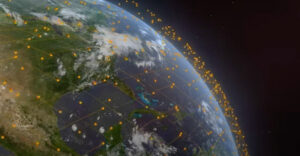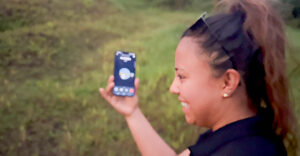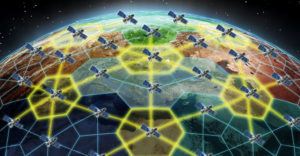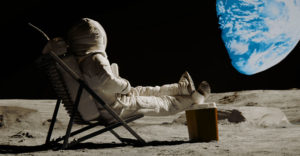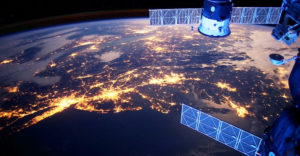
Google’s Project Tango smartphone, which is jam-packed with sensors, soon will be used in the International Space Station.
The United States National Aeronautics and Space Administration will swap out the smartphones it has used on two volleyball-sized free-flying satellites since 2011 with the Tango devices.
NASA, which announced the Tango tie-in back in February, has flown modified Tango phones several times on an aircraft that can simulate microgravity by taking a parabolic flight path. The phones’ motion-tracking and positioning code was rewritten so it could work in the microgravity environment on the ISS.
“In a shielded environment, the devices should work better than here on Earth,” Rob Enderle, principal analyst at the Enderle Group, told TechNewsWorld.
“Not having gravity is a benefit with electronics, particularly if you want to move them in all three dimensions,” he continued, but it would be necessary to “make sure the signals don’t interfere with anything else in the station.”
More on the Satellites
The flying satellites, called “Synchronized Position Hold, Engage, Reorient, Experimental Satellites” or Spheres, are self-contained units with their own power, propulsion, computing and navigation equipment.
They also have expansion ports for additional sensors and appendages such as cameras, wireless power transfer systems and smartphones.
The smartphones let the Spheres take pictures and videos, conduct inspections, make calculations, and make real-time data transfers to the computers aboard the space station via WiFi, and to mission control back on Earth.
Astronauts on board the ISS have conducted 77 investigations using Spheres to test techniques for tasks including automated docking of service satellites and emergency repairs.
Stepping Out With Tango
The addition of the Tango smartphones will let researchers control the Spheres in real-time in space and from ground control stations on Earth.
In future, free-flying robots such as the Spheres might be used to inspect the exterior of the ISS or of deep space vehicles. So far, the Spheres have been used only inside the ISS.
“These increasingly sophisticated mobile devices could, after being our primary communication devices for two to three years, get a second life as spacecraft that could be used for Earth observation, monitoring asteroids and small bodies, and an avenue to perform science experiments in space,” Jekan Thanga, an assistant professor at Arizona State University’s School of Earth and Space Exploration, told TechNewsWorld.
Making the Tango Fit for Space
Tango devices may have to be heavily modified for use in space outside the ISS.
“The biggest challenge with using smartphones, as with other electronic devices, is determining robustness to the radiation in space,” Thanga said.
While mass-manufactured smartphones are good enough for short-term missions in low-Earth orbit, they will “have to meet much higher standards if they are brought on board for spaceflight missions,” he noted.
Smartphones likely will need radiation hardening and possibly some way to be heated to ensure they don’t freeze in the depths of space, Enderle suggested.
Touchscreens will be a no-no because “astronauts’ gloves would be really huge,” Enderle continued. Voice control via radio might be a better option.
Mobile Tech Possibilities
“This will personalize space, providing the opportunity for possibly millions of citizens to have personal space and actively participate in space exploration,” Thanga suggested, pointing out that this is already happening in astronomy where amateur astronomers are making “important discoveries.”
Eventually, advanced smartphones might have sensors that can adjust to their environment, Jeff Orr, a senior practice director at ABI Research, told TechNewsWorld.
The Mars Rover program could benefit because local probes could capture more granular details of Mars’ surface, Orr suggested. “We could have a Google Map of Mars.”













